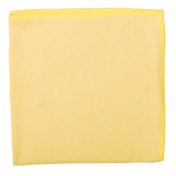Today's blog post in the flooring series is about PVC flooring. Here, too, we'll look at the special features, the material, and how to care for and clean it. The advantages and disadvantages will also be examined in more detail at the end. Of course, we'll also give you a recommendation for the right cleaner at the end.
The History of PVC Flooring
Alongside linoleum, the type of flooring we took a closer look at last time, PVC is one of the oldest flexible floors on the market . The flooring was developed in 1853 and then manufactured industrially in 1912. PVC flooring has been patented since then and PVC has been manufactured on a large scale since 1937.
What is PVC made of?
PVC stands for polyvinyl chloride and is a thermoplastic. It consists of 43% carbon and hydrogen and 57% chlorine. It also contains plasticizers to give the floor covering its flexibility, as the raw material is rather hard and brittle. Other different additives can be used to achieve individual properties such as light resistance or weather resistance. PVC is very versatile , as almost any color, texture, pattern and effect can be applied to the PVC floor covering.
Types of PVC Flooring
PVC floors are available in countless variants. They can be manufactured with or without a carrier layer . They can also be foamed or rolled and can be purchased in single or multi-layer sheets, tiles or panels . The thickness can also vary depending on taste and is in the range between 1 and 3 mm . In technical terms, PVC floors can be divided into homogeneous, heterogeneous PVC coverings, composite coverings or CV coverings.
PVC is suitable for these rooms
PVC can be used in private and industrial areas . The wear classes are divided into residential, industrial and commercial. Because PVC is hard-wearing , it is often used in rooms that are subject to a lot of wear. PVC is also well suited for the kitchen or bathroom , as the floor can absorb falling objects due to its soft properties. PVC can also be advantageous in hospitals, laboratories, operating rooms or clean rooms , as the seamless installation and the flexible properties of the floor prevent dirt and germs from settling. The PVC floor can easily be bent upwards on the walls and the floor becomes a kind of tub.
Advantages and Disadvantages of PVC
PVC has a number of positive properties. The most important properties are its very high mechanical and chemical resistance and the enormous product variety . Since PVC can be easily dyed, there is nothing to stop you from creating any color or pattern you want. Furthermore, PVC is easy to lay , is waterproof, non-slip and antistatic . PVC flooring is also characterized by its durability and resistance to corrosion. The floor is also suitable for allergy sufferers because it is easy to clean and maintain. Dust and dirt can be quickly removed.
In addition to the many advantages, there are unfortunately a few aspects that must be taken into account. For some time, there was an accusation that PVC flooring was harmful to health. However, the material has continued to develop over time and the chemical additives, stabilizers and plasticizers are much more environmentally friendly than before . In addition, strict guidelines apply in the EU and the floors must meet certain standards. When purchasing, the seal and instructions should therefore be taken into account. If the floor is certified, it is normally harmless and not harmful to health. The second aspect to be considered is that heavy furniture can leave marks on the floor. It is therefore important to use the appropriate usage class for the application. There are the following usage classes:
- Usage classes 21, 22 and 23 are for the living area
- Usage classes 31, 32 and 33 are for commercial properties such as hotels, offices, practices, etc.
- Utility classes 41, 42 and 43 are for the industrial sector
How to properly care for and clean PVC
As already mentioned, cleaning and maintenance is child's play , but a few small points must be observed. For basic cleaning, the floor should be damp-mopped with lukewarm water and a mild cleaner . However, it should not be wiped dry shortly after cleaning to avoid streaks. For routine cleaning, dirt and dust should be wiped away weekly. A dry mop, vacuum cleaner or broom is suitable for this. You should also wipe damp regularly. Here, too, lukewarm water and a mild cleaner are sufficient. Then wipe with clean water to maintain the shine. Then let the floor dry and never wipe it dry. Always make sure not to scrub the floor too hard and not to use abrasive or aggressive cleaners. This would damage the floor.
Mundizio therefore recommends: MULTIfris Universal Power Cleaner from Dreiturm
For optimal cleaning and care, we recommend the universal power cleaner MULTIfris from Dreiturm . The universal cleaner is an all-rounder and ideal for PVC floors. The cleaner is mild, low-foaming and only needs a short exposure time . The cleaner is ideal for both intermediate and routine cleaning. However, test the material compatibility in an inconspicuous area first.
All blog posts about the flooring series at a glance
- cork
- Carpet
- PVC
- Linoleum
- parquet
- laminate
- natural stone
- tiles



